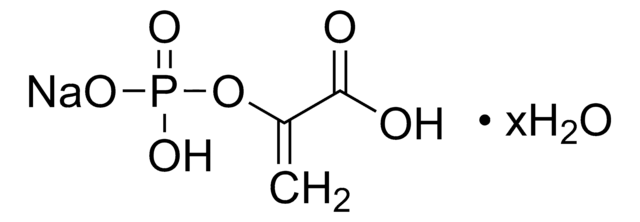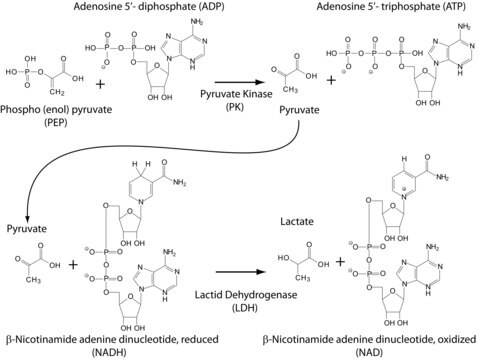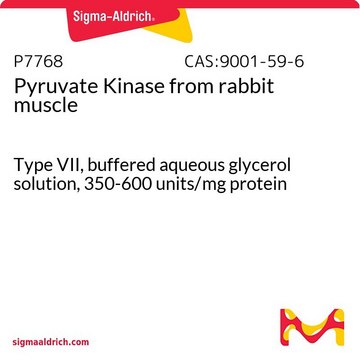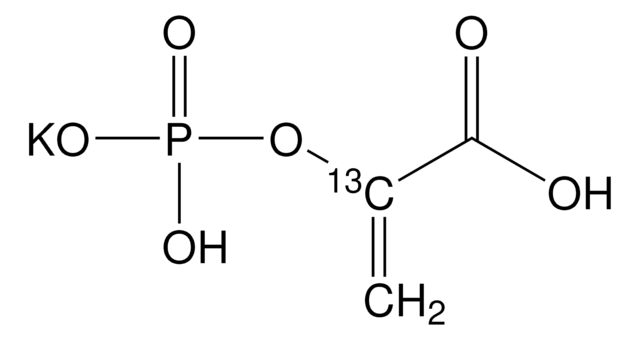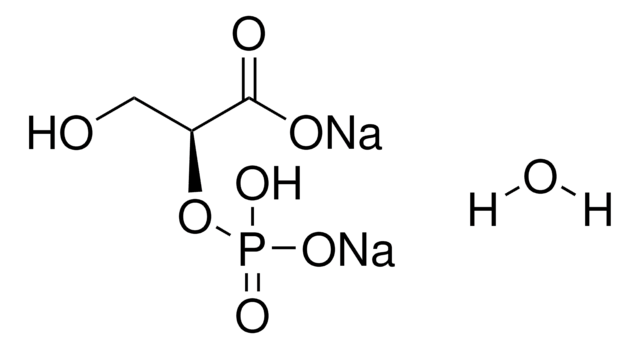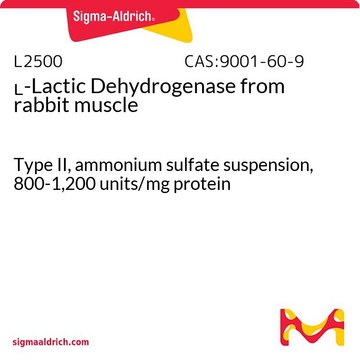P7127
Phospho(enol)pyruvic acid monopotassium salt
≥97% (enzymatic), powder
Sinonimo/i:
2-(Phosphonooxy)-2-propenoic acid monopotassium salt, mono-Potassium phosphoenolpyruvate, PEP-K
About This Item
Prodotti consigliati
Nome del prodotto
Phospho(enol)pyruvic acid monopotassium salt, ≥97% (enzymatic)
Livello qualitativo
Saggio
≥97% (enzymatic)
Stato
powder
Solubilità
water: 100 mg/mL, clear, colorless
Temperatura di conservazione
−20°C
Stringa SMILE
[K+].OC(=O)C(=C)OP(O)([O-])=O
InChI
1S/C3H5O6P.K/c1-2(3(4)5)9-10(6,7)8;/h1H2,(H,4,5)(H2,6,7,8);/q;+1/p-1
SOSDSEAIODNVPX-UHFFFAOYSA-M
Cerchi prodotti simili? Visita Guida al confronto tra prodotti
Descrizione generale
Applicazioni
- to maintain a constant concentration of adenosine triphosphate (ATP) for active gel assembly
- as a component in assay buffer for in vitro ATPase assay
- as a stock solution for optical trapping assay
Azioni biochim/fisiol
Codice della classe di stoccaggio
13 - Non Combustible Solids
Classe di pericolosità dell'acqua (WGK)
WGK 3
Punto d’infiammabilità (°F)
Not applicable
Punto d’infiammabilità (°C)
Not applicable
Dispositivi di protezione individuale
Eyeshields, Gloves, type N95 (US)
Scegli una delle versioni più recenti:
Possiedi già questo prodotto?
I documenti relativi ai prodotti acquistati recentemente sono disponibili nell’Archivio dei documenti.
I clienti hanno visto anche
Articoli
Review the 10 steps of glycolysis in the Embden-Meyerhof-Parnas glycolytic pathway. Easily compare reaction stages and buy the enzymes for your life science research.
We presents an article about the Warburg effect, and how it is the enhanced conversion of glucose to lactate observed in tumor cells, even in the presence of normal levels of oxygen. Otto Heinrich Warburg demonstrated in 1924 that cancer cells show an increased dependence on glycolysis to meet their energy needs, regardless of whether they were well-oxygenated or not.
Il team dei nostri ricercatori vanta grande esperienza in tutte le aree della ricerca quali Life Science, scienza dei materiali, sintesi chimica, cromatografia, discipline analitiche, ecc..
Contatta l'Assistenza Tecnica.

